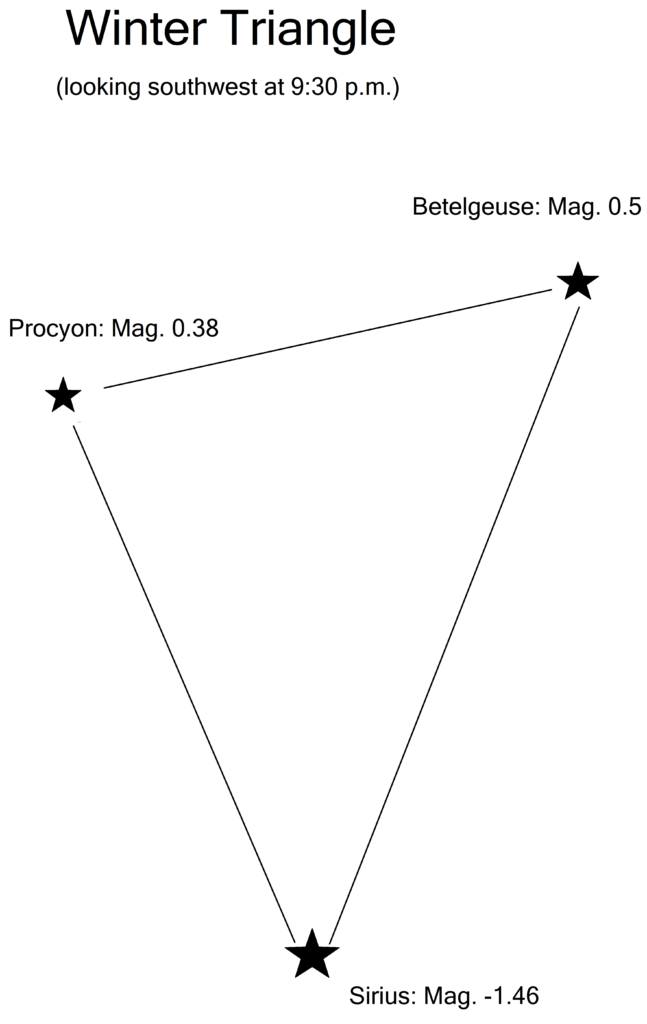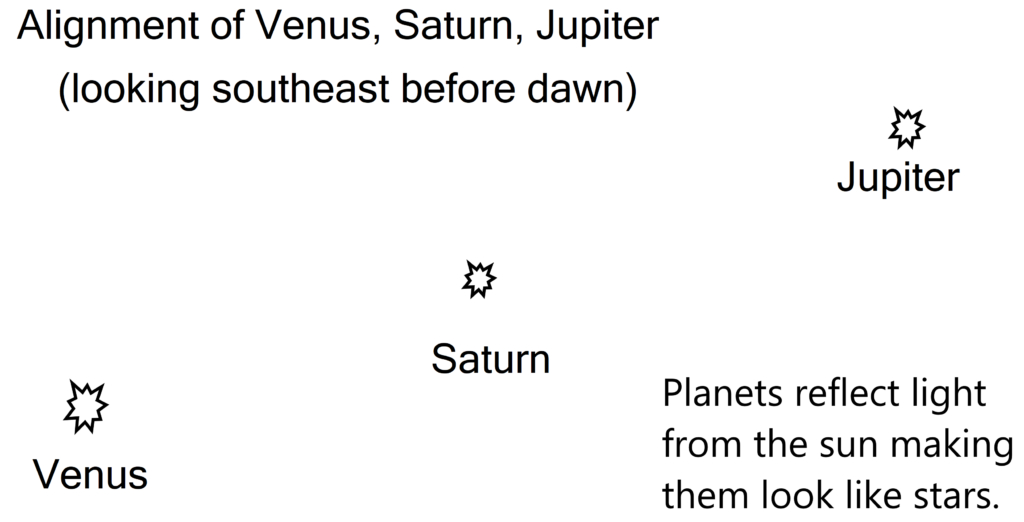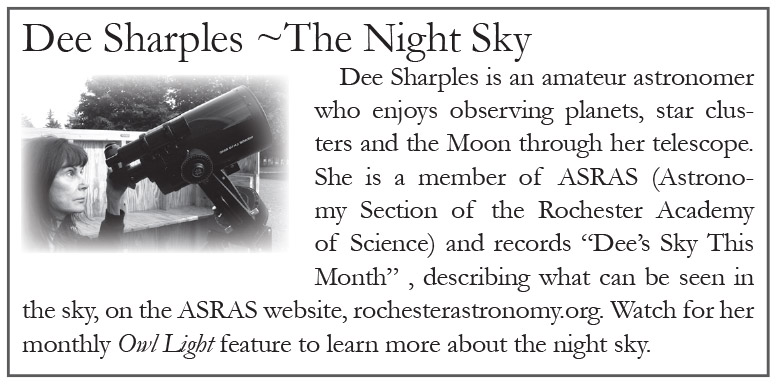The Night Sky ~ March
 by Dee Sharples –
by Dee Sharples –
March is the month in which astronomers, as well as anyone who enjoys looking up at the night sky, have had more than enough of cloudy, cold weather. But spring is just around the corner officially arriving at 5:58 p.m. on Wednesday, March 20. Soon the temperatures will be more comfortable for observing and the beautiful spring sky will beckon you outside.
A large asterism that’s easy to spot this month is the Winter Triangle. An asterism is a pattern in the sky made up of stars which are not physically related to each other and are separated by a great distance. It’s only our vantage point from Earth which allows us to see this particular configuration of stars.
The Winter Triangle is made up of three bright stars in three different constellations which can be found in the southwestern sky around 9:30 p.m.
Sirius, the brightest star in the sky, is at the point of this upside-down triangle and can be found about one-quarter of the way up between the horizon and straight overhead. It’s extremely bright and will be unmistakable when you spot it. Sirius is part of the constellation Canis Major, Latin for the ‘greater dog’, a large dog which follows Orion in the constellation of Orion the Hunter.
The 2nd star, Betelgeuse, is a red supergiant star located in the constellation of Orion and lies about halfway up from the horizon. It marks Orion’s shoulder as well as the right corner of the base of the triangle. You’ll be able to identify Betelgeuse because of its distinctly reddish hue compared to other stars in the sky.
The left side of the base of the triangle is represented by the star Procyon in the constellation Canis Minor, Latin for the ‘lesser dog’, a small dog which also follows Orion across the sky. Procyon can be found at almost the same height in the sky and east (to the left) of Betelgeuse.
The planets Venus, Saturn, and Jupiter grace the early morning sky lining up in the southeast. Venus, the brightest and closest to the horizon, will be easy to find about 45 minutes before the Sun rises. It will appear dazzling, shining at magnitude -4.0. Follow an imaginary straight line up and to the right to see Saturn, dimmer at magnitude 0.6. Then continue that line once more up and to the right to spot Jupiter, brighter than Saturn, at magnitude -2.1. Although the three planets will appear in a straight line all month, it’s only around the middle of March when they will lie equally spaced from each other and be especially impressive. If you’re an early morning riser, it would be interesting to observe the trio every clear morning throughout March and notice how they seem to move in relation to each other across the sky.

Although these planets will appear close to each other in the sky, they are actually millions of miles apart. Venus is an ‘inner planet’ situated closer to the Sun and travels around it in 225 days compared to our Earth which takes 365 days. Both Jupiter and Saturn are ‘outer planets’ and are much farther away from the Sun. Their journeys around our star take 12 years and 29 years respectively. Again, it’s only from our perspective on Earth that they appear to be close together in the sky.
You’ve most likely already noticed that the days are getting longer and the nights shorter. On the Spring Equinox on March 20, we will have 12 hours and 11 minutes of daylight and 11 hours and 49 minutes of darkness, almost equal.
